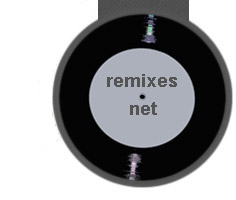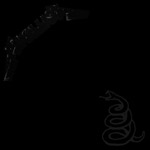enter sandman (vocal mix)remixed by dirty funker / spirit recordings"Enter Sandman" is a song by American heavy metal band Metallica, and the opening track and lead single from the band's 1991 album Metallica. It was written by Kirk Hammett, James Hetfield and Lars Ulrich, and produced by Bob Rock. The lyrics, written by Hetfield, deal with nightmares. As the first single of a successful album that sold over 15 million copies worldwide and increased Metallica's popularity worldwide, "Enter Sandman" achieved gold status in the US, selling more than 500,000 copies. Acclaimed by critics, the song is featured on all of Metallica's live albums and DVDs released after 1991 and has been played live in award ceremonies and benefit concerts. Motörhead's cover version of the song won a Grammy Award in 2000. writing and recording..."Enter Sandman" was the first song Metallica wrote for their self-titled album, released in 1991.[1] Metallica's way of writing songs consisted of lead guitarist Kirk Hammett and bassist Jason Newsted submitting tapes with ideas for songs to rhythm guitarist James Hetfield and drummer Lars Ulrich, who would then combine them with their own and write songs in Ulrich's house in Berkeley, California.[1] "Enter Sandman" evolved from a riff Hammett wrote.[1] Originally, the riff had two bars, until Ulrich suggested that the first bar should be played three times before the last.[1] The song was quickly finished,[2] but Hetfield did not come up with vocal melodies and lyrics for a long time and the song was among the last to have lyrics.[1] The lyrics featured in the song are not the original: Hetfield felt "Enter Sandman" sounded "catchy and kind of commercial" and to counteract, wrote lyrics about "destroy[ing] the perfect family; a huge horrible secret in a family" that included references to crib death.[3][4] Ulrich and producer Bob Rock told him they felt he could write better lyrics, the first time anyone suggested that to him.[3] According to Ulrich, even before the song had lyrics, it became the "foundation, the guide to the whole record".[1] An instrumental demo was recorded on 13 September 1990.[5] The album Metallica was recorded in Los Angeles, between October 1990 and June 1991. Ulrich, Hetfield and Rock did also a week of recording in Vancouver, Canada at the end of April and beginning of May 1991. Being the first with Bob Rock producing, it was recorded differently than previous Metallica albums: Rock suggested the band members should record while playing together in studio instead of separately.[6] "Enter Sandman" had what Hetfield described as a "wall of guitars": three equal rhythm guitar tracks played by himself to create a "wall of sound".[2] According to engineer Randy Staub, "close to 50" takes of the drums were recorded, because Ulrich did not record the song in its entirety; instead recording each section of the song separately.[7] Because it was difficult to get the "intensity" the band wanted in one take, the numerous takes were then selected and edited together.[6] The producing team spent much time and used between 40 and 50 microphones for the drums with different combinations to get the sound out of each part of the room.[7] The same techniques were used to record guitars.[7] The bass guitar frequencies gained importance with Rock: Newsted stated that before him, Metallica's sound was "very guitar oriented" and that "when he came into the picture, bass frequencies also came into the picture".[8] Being the first single, "Enter Sandman" was the first song to be mixed.[6] It took roughly 10 days because the band and Bob Rock had to create "the sound" for the entire album while mixing the song.[6] music and lyrics...After releasing a musically complex album in ...And Justice for All,[9] Metallica wanted to write simpler songs for their self-titled album,[1] therefore "Enter Sandman" is a departure from their previous works.[10] It is, as Lars Ulrich has stated, a "one-riff song": all sections derive from main riff that Kirk Hammett wrote.[1] "Enter Sandman" is 5:32 long, slightly above the average song length in the album and moves at 128 beats per minute.[11] The song begins with a clean guitar intro similar to the main riff. The drums come in playing the tom-toms heavily and a guitar plays an E chord with a wah-wah pedal on. Then, distortion guitars come in a buildup intro to the main riff that starts 56 seconds into the song. The main riff utilizes variations of the E/B♭ tritone, often referred to as the "devil's interval" in medieval church music.[12] The song then follows a common structure, with a verse, a pre-chorus, and a chorus being played twice. On the chorus and pre-chorus, the song modulates a whole tone up to F#.[13] After the second chorus, Hammett plays a guitar solo over the song main riff, the pre-chorus and chorus riffs. Hammett uses a wah-wah pedal and a wide range of scales, starting with E minor pentatonic and moving into E's dorian mode, B minor, F# minor and E minor.[13] After the solo, there's a breakdown, where the clean guitar intro and the drums are heard together with an adult teaching a child the Now I Lay Me Down To Sleep bedtime prayer. After building again to a chorus, the song starts to fade out while the band plays the same riffs of the buildup intro in reverse order.[11] Lyrically, the song has been said to be about "nightmares and all that come with them" by Chris True of All Music Guide.[10] Tim Grierson of Blender magazine says the lyrics "juxtapose childhood bedtime rituals and nightmarish imagery".[4] "Enter Sandman"'s main riff has been defined as "sinister" by P. J. Howorth in The Wah Wah book,[13] and All Music Guide reviewer Chris True has complimented the breakdown that "brilliantly utilizes that “now I lay me down to sleep” bedtime prayer in such a way to add to the scary movie aspect of the song".[10] Robert Palmer of Rolling Stone magazine says it is "possibly the first metal lullaby" and Andrew Blackie of PopMatters mentioned the song's "sludgy riffs and James Hetfield’s twisted lullaby lyric" while reviewing The Videos 1989-2004.[14][15] For Tim Grierson of Blender magazine, "Enter Sandman" has a "thick bottom end and propulsive riff".[4] This text is licensed under the GNU Free Documentation License. It uses material from the Wikipedia article "Enter Sandman".
|
metallica
|
|
| © 2000-2008 remixes.net | privacy policy | ||

